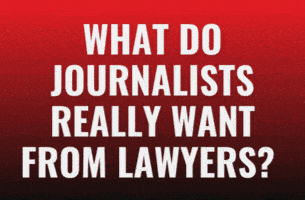
Signature: Solicitor believed the statements were compliant
A solicitor’s declaration that three witness statements were compliant with the rules set out in practice direction 57AC was false, the High Court has ruled.
However, the solicitor involved told Legal Futures he believed the statements were compliant when he signed the declaration.
David Stone, sitting as a deputy High Court judge, said he would not be giving the three statements “any weight” in an ultimately unsuccessful £8m claim brought by Timothy Fulstow and Robert Woods for declarations as to their beneficial interest in shares in a company which owned land near Swindon.
He said he considered the declaration by Richard Rooney, a consultant solicitor at Murray Hay in South London, that the witness statements were compliant with PD57AC “to be false”.
The judge said Mr Rooney “was not cross-examined before me, and so has not had an opportunity to explain himself.
“However, I cannot see on the basis of what is before me that Mr Rooney can have been satisfied that the purpose and proper content of trial witness statements and the proper practice in relation to their preparation had been explained to the three witnesses.
“I cannot see how he can have believed that the two (or three) witness statements complied with PD57AC – because they clearly and obviously do not, and any solicitor properly practising in this court ought to have known that.”
Counsel for the defendant submitted, on the first day of the trial, that the three witness statements – from Mr Fulstow and Mr Woods, and business consultant Connie Rodrigues – relied on by the claimant should be struck out or accorded no weight.
Judge Stone said it was “plain to me from an initial review of the papers prior to the trial” that the statements had not followed the practice direction and were “clearly inadequate”.
Among the reasons were that none of them included the witnesses’ confirmation of compliance, or a list of documents to which the witnesses referred.
The judge described the statements of Mr Fulstow and Ms Rodrigues as “a recitation of events based on the documents” which “seeks to argue the case, and comments on other evidence in the proceedings”. Mr Woods’ was “very similar in its wording” to Mr Fulstow’s “and appears to have been copied from it”.
Some of the errors “were pointed out to the claimants” by the defendants’ solicitors in an email in February 2024, who “provided an opportunity for the claimants to file fresh, compliant witness statements”, but the claimants “did not avail themselves of that opportunity”.
Judge Stone went on: “In my judgment, Mr Fulstow’s fourth witness statement was based heavily on advice received from his solicitors as to what he should and should not say. It is not his independent recollection of events. It is a carefully constructed analysis of the documents then available to the claimants. I can place no reliance on it.
“Mr Woods’ fourth witness statement was copied from Mr Fulstow’s, and, again, does not represent his independent recollection of events. Ms Rodrigues’ second witness statement is the result of what she was told by Mr Fulstow to say, and, again is not her independent recollection of events.”
Dismissing the claim, Judge Stone ruled that there was “no objective common intention of the parties” at the time that the shares would be acquired.
Mr Rooney told Legal Futures that the statements were “prepared by a litigator” who was working away from the office as she was on maternity leave and sent to him for service, saying he had not picked up on the fact that the certificate was not signed.
“The defendant’s solicitors pointed out after service that the witness statements had not complied with PD57AC.
“The litigator who prepared the claimant`s witness statements assured me that the witness statements were compliant and that they were prepared in conformity of the PD, so I accordingly endorsed the witness statements with the certificate of compliance, which the trial judge believed that I should not have done.
“I did sign the certificate of compliance only after I was assured that there was full conformity of the PD, and it was signed believing the same to be true. There was no intention to mislead whatsoever.
“The claimants counsel advised the trial judge that it was not me that had prepared the witness statements, and that the litigator who had prepared the statements was away on maternity leave, and in those circumstances I could not provide the court with any account as to how they were prepared.”















Leave a Comment